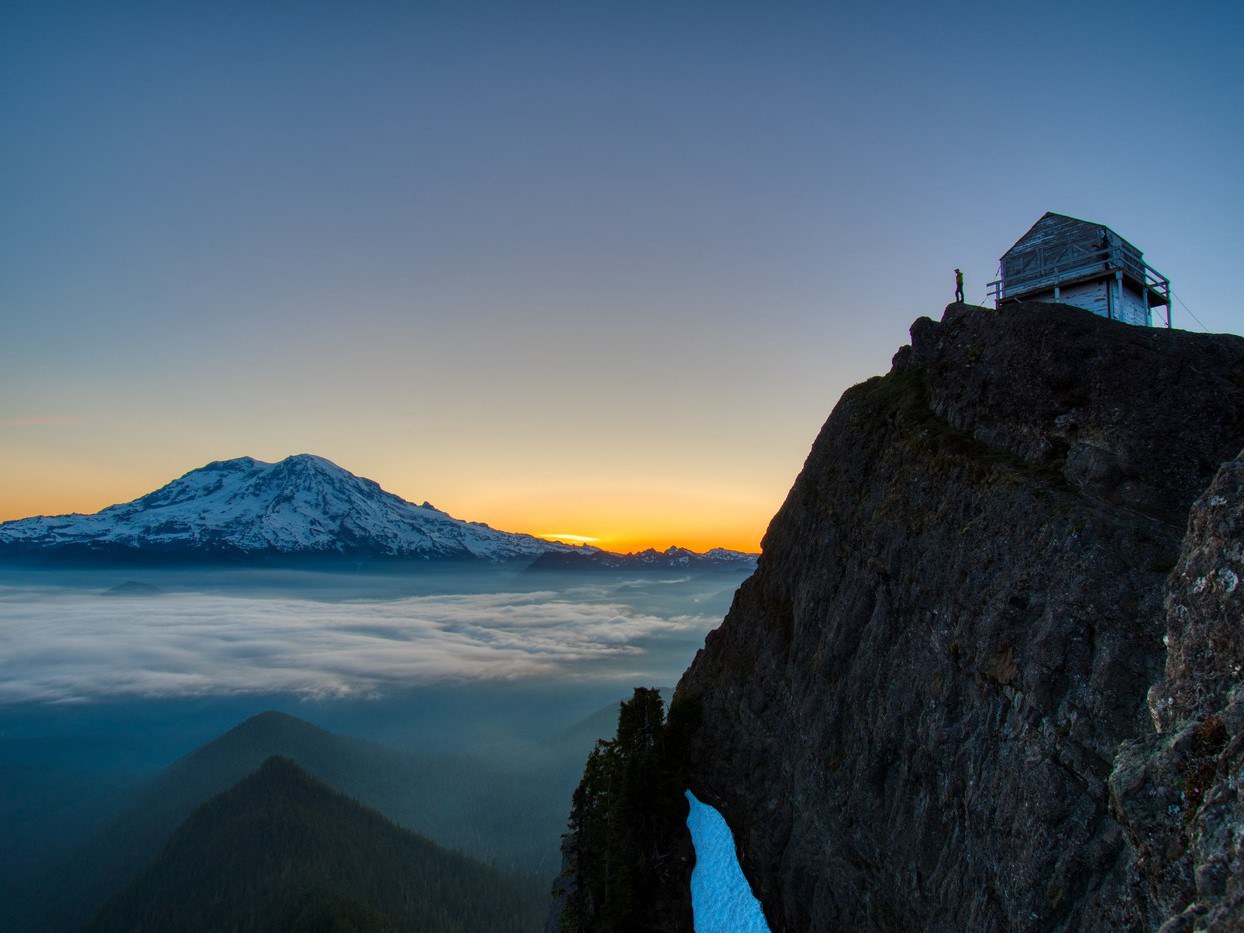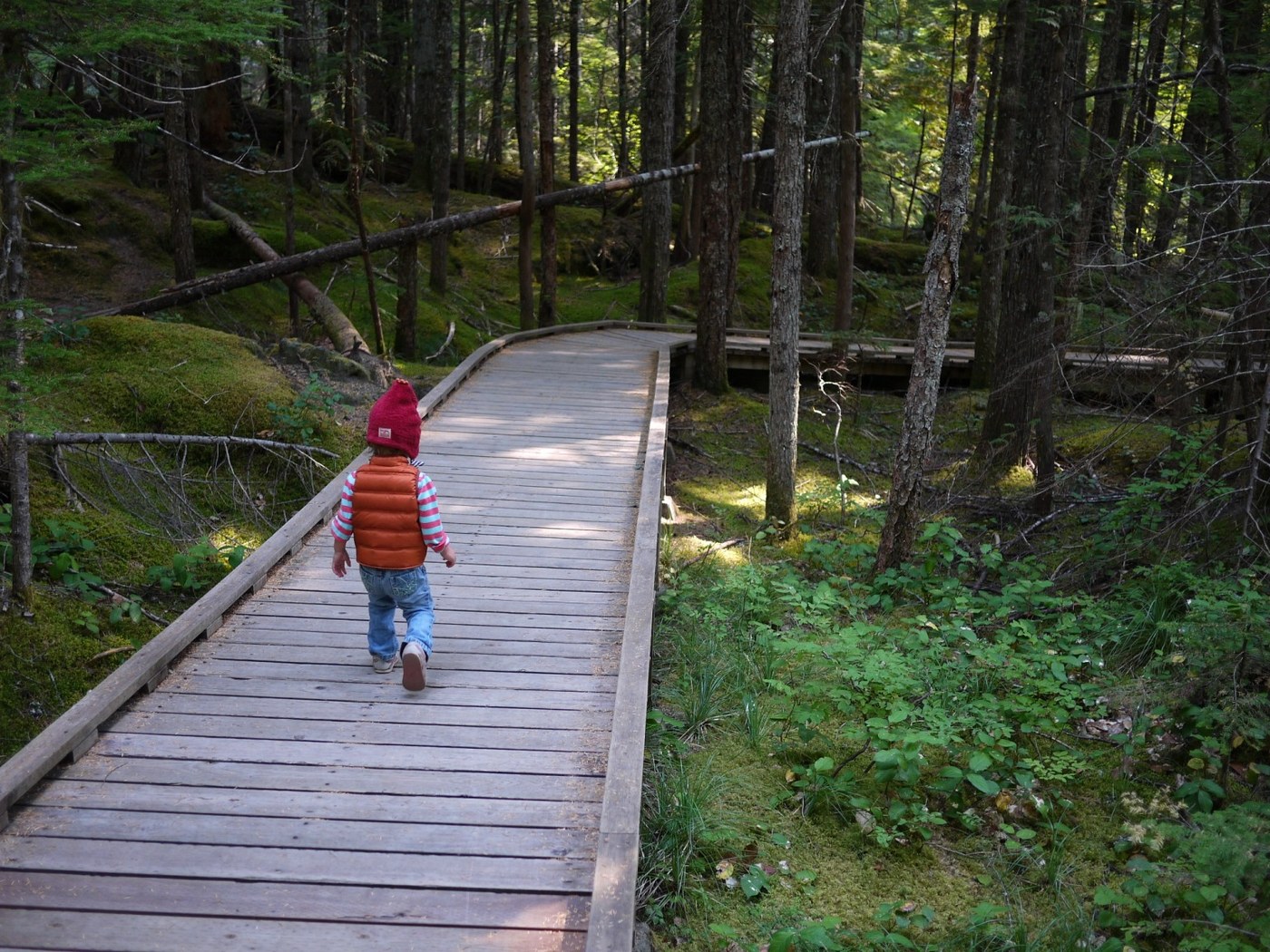Share Your Hopes for Trails in the Gifford Pinchot National Forest
Gifford Pinchot National Forest is creating a sustainable trail system plan to guide future recreation opportunities across the forest and to support visits to iconic places like High Rock Fire Lookout, Goat Rocks Wilderness, Mount Adams and Mount Saint Helens. The forest’s leadership wants to hear from you by Sept. 30 to learn what you value about access to this landscape and where you see opportunities to better meet needs in the future.
Gifford Pinchot National Forest is creating a sustainable trail system plan to guide future recreation opportunities across the forest and to support visits to iconic places like High Rock Fire Lookout, Goat Rocks Wilderness, Mount Adams and Mount St. Helens. The forest’s leadership wants to hear from you by Sept. 30 to learn what you value about access to this landscape and where you see opportunities to better meet needs in the future.
The forest is responding to increasing visitation, a need to prioritize limited resources across the 1.3 million acres of the forest and a desire to expand shared stewardship of the forest’s trails among the U.S. Forest Service, nonprofit partners and the public. WTA appreciates Gifford Pinchot National Forest’s approach to the sustainability of its trail system, and we are excited to deepen our partnership with the forest as we build a blueprint for the future together.
 High Rock is a popular destination in the Cowlitz Valley Ranger District of Gifford Pinchot National Forest. Other iconic destinations within the Gifford Pinchot include Mount Adams and Mount Saint Helens. Photo by trip reporter richard.zielke.
High Rock is a popular destination in the Cowlitz Valley Ranger District of Gifford Pinchot National Forest. Other iconic destinations within the Gifford Pinchot include Mount Adams and Mount Saint Helens. Photo by trip reporter richard.zielke.
The Forest Service’s Shrinking Workforce
According to analysis by the Government Accountability Office, around one quarter of the approximately 159,000 miles of United States Forest Service system trails across the country are maintained to standard in a given year. With current resources unable to support all the trails in the system, we need to develop new strategies to concentrate resources and expand our shared impact. The Forest Service’s leaders in Washington D.C. have called for more collaboration with nonprofits. WTA is an example of one of those partnerships. WTA work party participants contributed over 7,000 hours of volunteer service on the Gifford Pinchot National Forest last year. We believe that our partnership with the Forest Service is a model of collaboration that should be supported and replicated across the National Forest System. We also believe that Congress needs to dedicate more funding to the Forest Service for recreation. In a meeting with WTA staff earlier this year, Forest Service Chief Randy Moore noted that the Forest Service has around 8,000 fewer jobs than it did two decades ago. WTA is working on the national level to get the Forest Service the resources it needs. At the same time, we support the national forest units here in Washington through collaborative planning and trailwork.
Sustainable trails find balance
Sustainable trails exist at the balance between social, natural and economic factors. We need to consider who visits trails, why they visit and how they get there. Ecological factors mean that trails require regular maintenance, as well as responding to the impacts of extreme weather events and climate change. Reliable funding is necessary for beloved trails to stay open and safe. The complexity of this balancing act means that trails should be examined for sustainability on an individual basis, and that this should happen in conversation with local communities and other stakeholders. There is no formula for what makes a sustainable trail. That is why your feedback is critical to creating a plan for trails in Gifford Pinchot National Forest. The forest is asking for your thoughts on a key set of questions. Below are some of WTA’s perspectives on those questions that we are sharing with forest leadership. We encourage you to share your own feedback.  Trail of Two Forests is one of the 13 trails within Gifford Pinchot National Forest that the forest considers accessible. WTA would like to see the forest expand the spectrum of opportunities available for different levels of ability, experience and challenge. Photo by Ryan Ojerio.
Trail of Two Forests is one of the 13 trails within Gifford Pinchot National Forest that the forest considers accessible. WTA would like to see the forest expand the spectrum of opportunities available for different levels of ability, experience and challenge. Photo by Ryan Ojerio.
WTA's key thoughts
What is working well?
There are multiple places where Gifford Pinchot National Forest already benefits from networks of interested parties working together for trails. Places like the Upper Cowlitz Valley and Silver Star Mountain. Available funding should target key areas where there is already momentum and a framework to translate funding into sustainable trails.
What concerns do you have about trails?
WTA wants to see the forest provide a wide spectrum of recreational opportunities to meet a variety of experiences and levels of challenge. We want the benefits of being outdoors to reach as many people as possible. Within Gifford Pinchot National Forest, there are only four trails that are more than 1 mile in length that the forest considers accessible. We would like to see this type of opportunity increased. Wheelchair friendly trails also serve families, hikers who are limited on time and those who are new to the experience of exploring our national forests.
What do you think are opportunities to improve trails and recreation?
WTA is interested in the possibility of connecting recreation sites, trails and roads with the goal of making Gifford Pinchot National Forest accessible by public transit. We hope that individuals and families without private vehicles can better connect to the national forest in the future. The current planning process is focused on modernizing the forest’s existing trail systems, but there may be opportunities to pilot some of these ideas in places where new facilities or trail connections are being considered.


Comments
CascadeDude on Share Your Hopes for Trails in the Gifford Pinchot National Forest
It's clearly a matter of priorities. I personally prefer to hike trails that are hard to get to, have blow-downs (within reason), and tend to get a bit overgrown in places. It's not that I like those features in a trail but I love that they limit the number of hikers on some trails.
I recommend prioritizing trails for limited resources thusly: 1) Trails that provide the greatest amount of access to the greatest number of people, especially children and those who need accommodation. 2) Popular trails that get a lot of use. 3) Trails I like, LOL.
Category 1) trails should be maintained in great condition, category 2) in decent condition, and category 3) in minimally hike-able condition.
For the category 3 trails, perhaps WTA might be able to find volunteers who would be interested in focusing on keeping marginal category 3) trails open with minimal impact on resources needed for higher-priority projects.
Posted by:
CascadeDude on Sep 14, 2023 05:28 PM
Dan Bode on Share Your Hopes for Trails in the Gifford Pinchot National Forest
I appreciate the work the NFS has done in the Gifford Pinchot NF. We have hiked the PCT in sections all the way from the Columbia to Mt Rainier and enjoy that type of trail. We also like the trails around Mt St Helens and Mt Adams to be well maintained. Thanks to WTA teams we've seen a lot of trail work done and hope the USFS partners as much as possible to keep trails of all levels open.
Posted by:
Scouter Dan on Sep 14, 2023 07:29 PM
climbgeezer on Share Your Hopes for Trails in the Gifford Pinchot National Forest
I agree with 'CascadeDude' - three levels of trails in some kind of balance 50% type 1, 30% type 2; 20% type 3. I also note that the Pacific Crest Trail is located in this forest, with numerous 'access trails' from roads at different locations. The PCT and the access trails should be in tiers 1 or
2 (?). (access trails are for emergencies along the PCT - I believe).
Posted by:
climbgeezer on Sep 14, 2023 08:28 PM
William Austin on Share Your Hopes for Trails in the Gifford Pinchot National Forest
Having hiked quite a bit in the goat rocks wilderness, I truly love the forest that you manage. One of the places I want to explore more is Mount Adams, but the trail system there is limited. So anything that can be done to expand the trail system, especially with moderate difficulty hikes, would be greatly appreciated
Posted by:
William Austin on Sep 14, 2023 09:19 PM
A Tuesday Trekker on Share Your Hopes for Trails in the Gifford Pinchot National Forest
I recently backpacked in the Goat Rocks area and found trails in great shape. My biggest concern is how to prevent certain trails and areas from being over-used, for example the Snowgrass Flat trail and others in that area. In particular, the need for wilderness "sanitary facilities" is pretty acute as the "tree-cilities" are badly over-used..... webs of little pathways growing as people seek out places to "go". But evidence abounds, with toilet paper visible, etc.
Overall, I support finding ways to sustainably maintain the most accessible and highly-used trails in popular areas. Beyond that, focus resources on addressing truly dangerous portions of wilder trails.
Posted by:
A Tuesday Trekker on Sep 15, 2023 09:50 AM
Ryan Ojerio on Share Your Hopes for Trails in the Gifford Pinchot National Forest
Cascade Dude - thank you for the specific comments that provide a useful framework to think about priorities, I couldn't agree more. Our work in the Silver Star Vision plan takes the same approach you're suggesting. The Eastern zone is more of the off the beaten path ruggedness (type 3), the Northwest zone could best serve people with physical limitations (type 1) because it has the trailhead at the highest elevation and the Southwest Zone has the potential for being the popular are that gets the most use (type 2). Of course the zones don't have to be entirely exclusive. There is an old road bed in the east zone that could be made into an ADA trail for the first mile or two before it goes rugged, similarly with the Southwest Zone.
I can see lots of places where this pattern trail flavors could be applied - its already basically established in the Trapper Creek Wilderness by having the popular Trapper Creek and Observation Trails interconnected with much steeper and infrequently logged routes that the Mazamas established decades ago.
Posted by:
Ryan Ojerio on Sep 15, 2023 03:25 PM
austingal on Share Your Hopes for Trails in the Gifford Pinchot National Forest
I also agree with CascadeDude. I very much oppose the notion of increasing accessibility by public transit, which will only increase the already high traffic on these trails. Many of us value the solitude and silence of wilderness, so much of which has already been lost. Please don't "Disney-fy" the wilderness any further--it will cease being wilderness if these measures are implemented.
Posted by:
austingal on Oct 05, 2023 08:20 AM